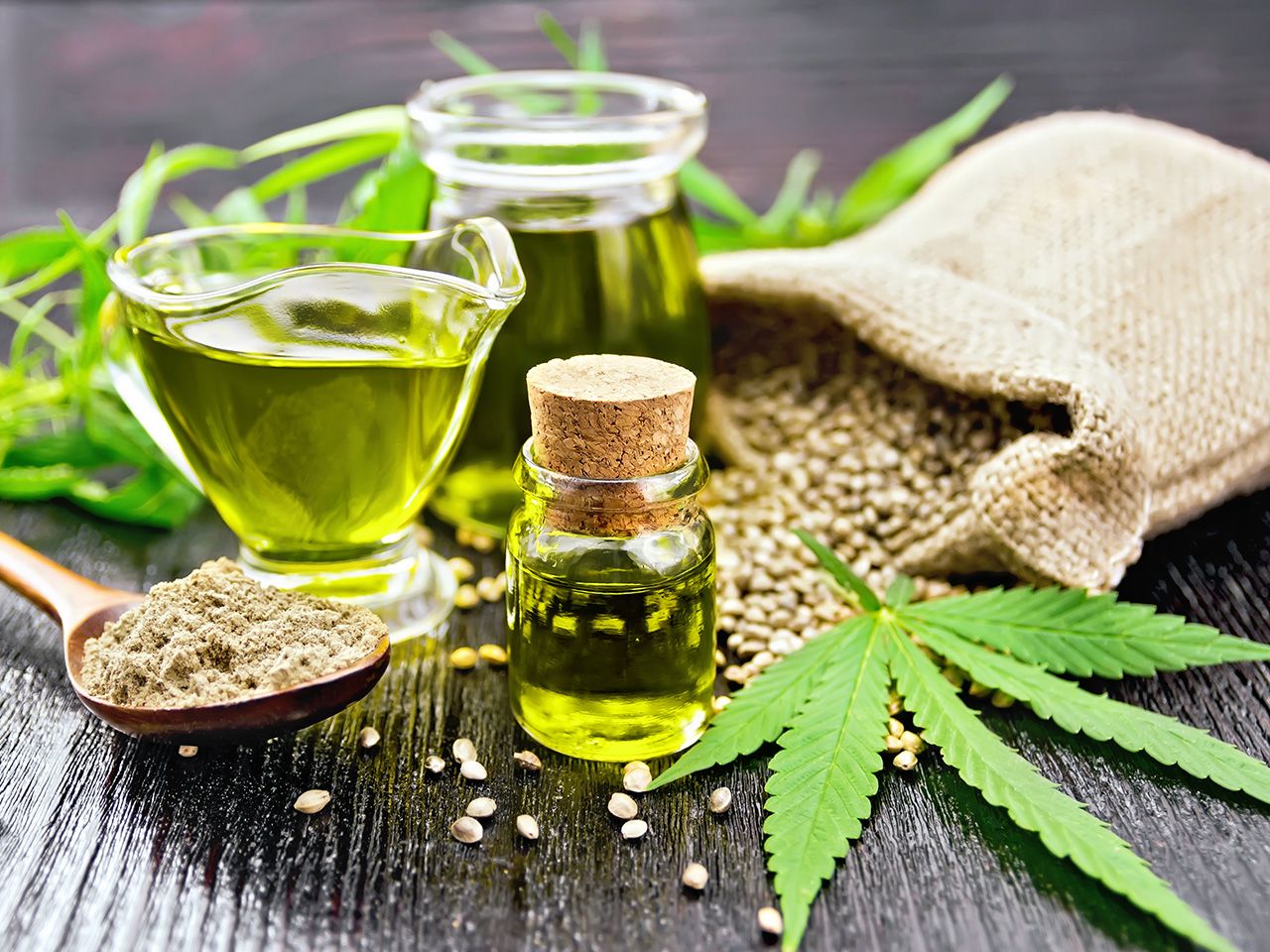Follow Us
Join our newsletter
SIGN UP FOR OUR LOYALTY PROGRAM
Sign Up
FOR WEEKLY UPDATES CRAFTED JUST FOR YOU
The ultimate guide to THC transdermal patches
Hey, have you heard the news? Thanks to the THC patch, now you can get your daily dose of tetrahydrocannabinol without the need for blunts, joints, bongs, edibles, creams, or tinctures. We know it sounds like science fiction, but it’s not.
In fact, transdermal patches (a.k.a. transdermal delivery system or TDDS) have been around for almost 40 years. Way back in 1979, the FDA approved a scopolamine patch for motion sickness. Not long after that, the FDA approved the nitroglycerin patch for individuals with heart problems.
Other transdermal patches followed shortly thereafter. The most famous TDDS is the nicotine patch introduced in 1991 to help tobacco users kick the smoking habit.
With the legalization of medical and recreational cannabis in the early part of the 21st century, the next logical step was the THC patch. And now, they’ve finally arrived. But what are THC patches? And how exactly do they work?
The experts at Bay State Cannabis will answer those important questions and many others. We’ll also talk about what strains work best and the difference between a THC patch and a THC cream (topical).
First, though, it’s vital that you understand what you’re getting when you slap on a THC patch.
What Is THC?
It’s hard to believe we even need to answer this question anymore. But for the sake of thoroughness—and for those you who have lived in the Bornean rainforest for the past 80 years—we’re going to do it anyway.
THC (or tetrahydrocannabinol) is one of a group of chemical compounds known as cannabinoids. Cannabinoids are found exclusively in the cannabis plant (indica, sativa, and ruderalis) and are responsible for the myriad of psychedelic and medicinal effects. Common cannabinoids include:
- CBG
- CBN
- CBD
- THCA
- THCV
THC is most famous (infamous?) for its ability to get you high, but it can also be used to:
- Kill cancer cells
- Relieve chronic pain and inflammation
- Stimulate appetite
- Reduce/eliminate nausea and vomiting
- Treat PTSD and other neurological disorders
We’ll talk about whether a THC patch will get you high in a later section. But first, let’s get to know the THC patch a bit better.
What Is A THC Patch?
Put simply, a THC patch is a thin piece of plastic coated with adhesive (like a Band-aid™) and infused with the cannabinoid THC. Because of the way they work, THC patches can offer all-day or all-night relief to those suffering from chronic issues like pain and anxiety.
To get this relief, you simply apply the THC patch to a venous part of your body, like your ankle, your arm, or the inside of your wrist. Your body heat activates the patch and causes it to release a small amount of THC through your skin and into your bloodstream.
We’ll get into the specifics of how the THC patch works in just a moment. Now, we’re going to answer the question on everyone’s mind: will a THC patch get you high?
Will A THC Patch Get You High?
The short answer is no. A THC patch won’t get you high because your body absorbs the cannabinoid slowly over a number of hours rather than all at once (like it is when you smoke or dab). This is great news for those who need THC’s medicinal effects without the intense psychoactive high.
So as you can probably guess, THC patches are not for those who want to go flying in a Blue Dream. Instead, they’re for those with real medical issues who need the healing effects of THC.
For the recreational user who enjoys a bit of couchlock now and again, your best bet is still a strong weed strain and a movie from this list. Leave the patches for those who need them, and try a Thai stick or some moon rock weed instead.
How Do Transdermal THC Patches Work?
We’re going to drop some science, son, but don’t let that scare you off. THC patches provide a unique method of cannabinoid delivery, and it’s essential that you understand how they work. So buckle up; here we go.
When you apply a THC patch to your skin, you set up a drug concentration gradient. That just means that at one point (in the patch), there’s a lot of the cannabinoid, while at another point (in your skin), there’s not a lot of the cannabinoid.
When your skin’s heat activates the patch, the cannabinoid begins to spread out into your skin (this is technically known as “moving down the gradient”). This concept is very much like pouring boiling water into a coffee mug and leaving it sitting on your counter.
The hot water contains a lot of heat (212℉ worth), while the atmosphere around it doesn’t. Because of this difference (the gradient), the heat naturally “spreads out” into the air around it.
As the drug moves further into your skin, it’s absorbed into your bloodstream and transported to your brain and throughout your body. The nice thing about transdermal delivery is that it bypasses your lungs, liver, and stomach (places where the cannabinoid is filtered or broken down). That means you get 100 percent of the medicinal value of the THC.
Are All THC Patches The Same?
At first glance, one THC patch may look like every other patch. But let us assure you that there are significant differences. The primary difference lies in how the patch is constructed. Here’s a breakdown of each.
Matrix Patches
Source:
www.sciencedirect.com
In a matrix patch, the THC is infused into the matrix of the patch itself (often in the adhesive). When the adhesive comes in contact with your skin, the THC begins to move from the area of higher concentration into the area of lower concentration (as described in the section above).
The dose of THC you get depends on the amount of the cannabinoid held in the matrix and the size of the patch (and the area of skin it covers).
Reservoir Patches
Source: www.sciencedirect.com
Reservoir patches get their name from the fact that the THC is—drum roll, please—contained in a reservoir within the patch. The reservoir holds the THC in solution (most often with a gel) and releases it through a rate-controlling membrane between the reservoir, the adhesive, and your skin.
People have been using reservoir patches successfully for almost 40 years. In addition, reservoir patches provide tighter control of delivery rates. For these reasons, many feel that reservoir patches are better than matrix patches.
What Are The Benefits Of Transdermal Delivery?
THC patches provide a whole host of benefits over other methods of cannabis consumption. Here are just a few of the most notable.
Whole-Body Relief
Because the THC is absorbed directly into your bloodstream with a THC patch, transdermal delivery can provide whole-body relief instead of just targeted (spot) relief.
Time-Released Relief
Transdermal delivery releases THC slowly over a number of hours (four to six on average). This is in stark contrast to other methods of consumption, which peak quickly and then taper off.
Specific Cannabinoid Options
Transdermal patches make it possible to deliver specific cannabinoids in order to target specific problems. When you smoke a joint, you’re getting a whole mix of different cannabinoids. With the THC patch, you’re only getting THC. So, the medicinal effects will be stronger.
Discreet
THC patches are probably the most discreet consumption method on the market today. You simply apply the patch to a venous part of your body, like your arm or wrist. Depending on how long the patch lasts, there’s no need to administer another dose for quite some time.
What Are The Specific Physical Benefits Of The THC Patch?
Transdermal delivery is a very useful and effective way to get THC into your system. But what are the specific physical benefits you can look forward to? We’ve listed them below.
Pain Relief
The chief physical benefit of the THC patch is pain relief. If you’re suffering from cancer, a bad back, neuropathy, or other chronic pain, a THC patch may be the solution you’ve been looking for.
That’s not to say that the THC you get in your doobie or bong won’t numb the pain too. It’s just that the pain relief comes with a host of other physical “side effects” like euphoria, panic, and intense hunger.
That brings us to the other physical benefits of the THC patch.
Lucidity
As mentioned, the THC patch is not as psychoactive as other methods of consumption. You might feel a hint psychotropic effects, but, for the most part, you’ll remain high functioning and productive.
Negligible Paranoia
One of the seven key stages of getting high (i.e., toking THC) is paranoia. This is the feeling you get when you’re convinced that everyone — and we mean everyone — is out to get you.
We’re not saying this paranoia can’t be fun, but if you need pain relief but still have to go to work, that feeling that the world is watching can be a major drag.
The slow absorption of the THC in a THC patch keeps paranoia at bay so you can get on with your day.
Dosing Accuracy
Edibles are a quick, easy, and discreet way to ingest the THC you need, but the dosing can be hit or miss sometimes. One brownie might have you seeing sounds, while the very next brownie might do nothing but add to your waistline.
A THC patch delivers an accurate dose all the time, every time. You really can’t say that about most of the common ways to get THC into your system.
Easy De-administration
Have you ever tried to un-smoke a joint or un-drink a cup of weed tea?
Once you’ve toked to the roach or drained your cup dry, you can’t stop the THC from interacting with your body and brain. Barring some pretty drastic measures, you’re on that ride to the end, my friend.
But with a THC patch, if you don’t like how you feel, you can easily de-administer your medicine by peeling off the patch. Sure, we probably invented a word there (we’re working on a copyright: De-administer ©), but you get our drift.
Less-Intense Munchies
One of the nice side effects of THC is that it stimulates hunger. This is especially useful for people who are dealing with serious illness and nausea that prevent them from eating (lack of calories can compound an already bad situation).
But for some, THC on the brain pushes hunger into uncharted territory. This is called the munchies and can lead to some interesting (and horrifying) meals.
Cheetos and Sour Straws? Check. Spicy pickles and whipped cream? Uh-huh. A peanut butter, marshmallow fluff, and caramel corn sandwich? Yes, please!
With a THC patch, there’s none of that. You might feel a little hungry — like you haven’t eaten in a few hours — but you won’t be convinced it’s been a week since your last meal.
So why exactly does the THC in a THC patch make you slightly hungry but not ravenous? The answer has three parts.
The Science Behind The THC Patch And Hunger
The question we’re really asking here is, “Why does THC make you hungry in the first place?” Put simply, THC makes you hungry because:
- It heightens your sense of smell and makes food taste better
- It increases your craving for carbohydrates (sugar)
- It produces ghrelin
So you’ll be able to smell food from farther off, and you’ll be more motivated to eat that food because you know it will taste good.
You’ll also experience a need for more carbohydrates (sugar) in whatever form you can get them.
And, finally, the cannabinoids in your THC patch mimic the endocannabinoids in your body (yes, your body makes its own cannabinoids). Those invader cannabinoids (exogenous cannabinoids if you want to get really fancy) interact with the hypothalamus and cause it to produce ghrelin.
First, ghrelin is pronounced with a silent “h.” Second, it’s the stuff that signals your body that you’re low on fuel. Too much ghrelin and you’ll feel famished.
So even if you just ate, taking a big ol’ dose of THC can make you feel like you skipped about seven meals. But there is a catch to all this science.
That empty feeling is directly related to the amount of THC you put into your system. With a doobie or a bong (or even an edible), you get a large dose all at once. That shoves those physical processes — smell, craving, and ghrelin — into overdrive. So your hunger goes from 0 to 100 in a matter of minutes.
But with a THC patch, the amount of THC you put into your system is small and steady. So, to extend the metaphor from above, instead of your hunger going into overdrive, it might only hit 5 or 10 miles per hour.
Breaking It Down
We’ve touched on a lot of technical subjects, particularly as it has to do with hunger. To help you process all that information, we’ve broken everything down into four basic steps:
- You get hungry (naturally) after your digestive system releases ghrelin. The ghrelin signals your hypothalamus to release endocannabinoids. These endocannabinoids, in turn, activate the feelings of hunger in your body. We might illustrate it like this: Ghrelin → Hypothalamus → Endocannabinoids → Hungry
- Cannabis contains cannabinoids (of the phyto- variety) that are similar in structure to the endocannabinoids in your body.
- When you consume cannabis in any form, you introduce A LOT of cannabinoids into your brain (Woohoo!).
- These cannabinoids mimic the endocannabinoids that are already there and turn on every neuron they can find. That makes you super hungry. Welcome to the munchies!
But, again, it’s essential that we reiterate the point that THC patches release cannabinoids slow and steady, not all at once. That reduced absorption keeps the munchie monster at bay and allows you to function normally.
What Strains Work Best For THC Patches?
The purer the strain, the more THC, terpenes, and trichomes will be available for use in the patch. Organic marijuana is some of the purest product on the market and provides the best raw material for transdermal patches. Make sure the patches you use are made with 100-percent organic cannabis.
Is There A Difference Between THC Patches And Topicals?
Many people wonder if there’s a difference between a THC patch and a THC cream (a.k.a. a topical). There is.
Because of the way topicals are made, they only affect the first three layers of skin and are really only good for spot treatment. This is because those top layers of skin don’t have a lot of veins, so the THC isn’t absorbed into your bloodstream.
With THC patches, the cannabinoid does reach your bloodstream and can circulate throughout your entire body. As mentioned, this provides a whole-body effect rather than a spot effect.
Are THC Patches Right For You?
The only way you’re going to know if THC patches are right for you is to give them a try. There’s really no downside because the patches won’t get you high and they don’t have any discernible side effects.
And if you don’t like your experience with THC patches, you can always switch to one of the many other forms of cannabis on the market today. That’s the beauty of cannabis: there’s no right or wrong way to use it.
For more information on all things marijuana and to check out our 100-percent all-natural cannabis products, visit baystatecanna.com today.
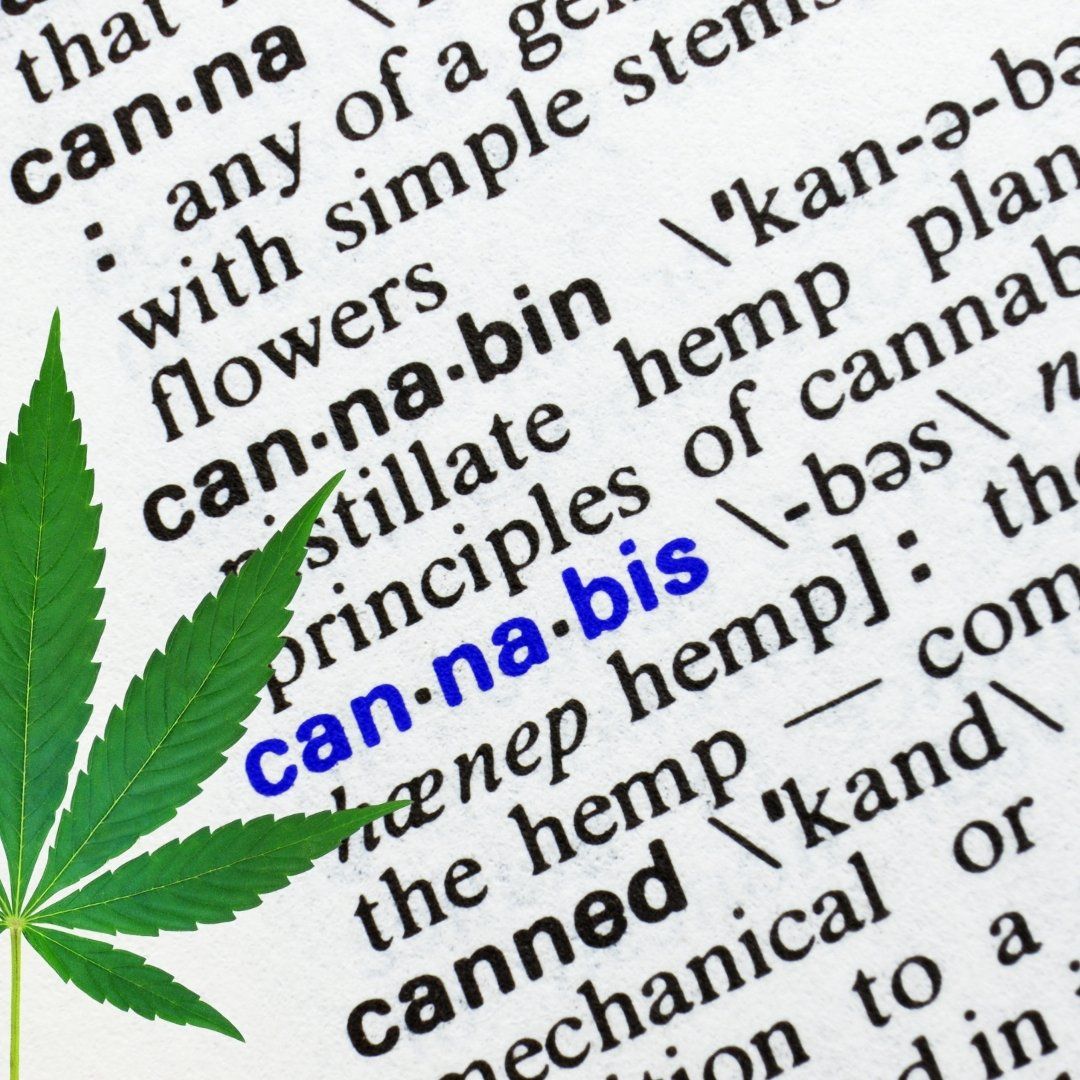
By Nakiesha Jordan
•
March 15, 2021
Starting off new to cannabis use can be intimidating with so many new terms to learn. Cannabinoids, terpenes, Endocannabinoid System, and more can appear confusing or complex but there is no reason to feel overwhelmed! This blog will break down some of the common cannabis terms so that you can use this knowledge to feel more empowered when selecting cannabis products! In order to understand the foundation of common cannabis terms you will first need to know what the Endocannabinoid System is. The Endocannabinoid System is a complex cell signaling system that regulates body functions such as homeostasis, your nervous system, and your immune system. The Endocannabinoid System also produces the runner’s high. The Endocannabinoid System involves endocannabinoids, receptors, and enzymes that help your body to function properly. The main endocannabinoid receptors are CB1 and CB2 receptors. CB1 receptors are found predominantly in your Central Nervous System where as CB2 receptors are found in your Peripheral Nervous System. Enzymes are useful for breaking down endocannabinoids once they have fulfilled their purpose. Now that you know a bit about the Endocannabinoid System let’s discuss how cannabinoids such as THC and CBD interact with it! Cannabinoids are the compounds within the cannabis plant that produce effects within the body by interacting with endocannabinoid receptors. Cannabinoids can regulate how cells communicate by directing how they send, receive, or translate their functions. Some common cannabinoids include CBN, CBG, CBC, THCV, CBD, and THC. THC, otherwise known as Tetrahydrocannabinol, is the most common psychoactive cannabinoid within the cannabis plant. It is the cannabinoid that interacts with the Endocannabinoid System producing a feeling of being euphorically high. CBD, known also as Cannabidiol, is the non-psychoactive cannabinoid within the cannabis plant that may offer therapeutic benefits. CBD can block out THC from interacting with endocannabinoid receptors when taken in larger amounts than THC which may help lessen its effects. When THC and CBD are taken in equal amounts the effects of THC are heightened and may produce a more balanced and pleasurable high. TAC is another acronym that is seen on a dispensary’s menu. TAC is Total Active Cannabinoids. It measures the potency of the product through adding the amounts of the cannabinoids, terpenes, and other compounds present within it. What are Terpenes you ask? Terpenes are the aromatic compound of the cannabis plant. Terpenes are what gives each cannabis strain its own unique taste, smell, and effects. Terpenes are known to possibly provide therapeutic effects. Terpenes are oftentimes more important than a high THC content when choosing the affects you wish to experience. When terpenes and cannabinoids work synergistically together to create many unique benefits and effects caused by the full spectrum aspect within a product it is called the Entourage Effect. Terpenes and cannabinoids each have different boiling points. The different temperatures when heating cannabis flower or oil causes different terpenes and or cannabinoids to be more bioavailable for your body. When in doubt about what temperature to use always opt for a lower temperature setting. There are three different strains that cannabis can be categorized in. Cannabis Sativa, Cannabis Indica, and Cannabis Ruderalis (Hybrid). Cannabis Sativa plants tend to have longer leaves and grow in warmer climates. The effects of Sativa strains may be energizing, uplifting, and may have more cerebral effects. Indica strains tend to have shorter leaves and grow in cold climates. Indica strains may produce sleepy and more body focused effects. Hybrid strains are the combination of Indica and Sativa strains and may have more balanced, relaxing, and or creative effects. Some other terms you may see or hear in a dispensary tend to be in regard to products. Cannabis flower is the bud of the cannabis plant, pre-rolls are cannabis filled cigarettes, topicals are cannabis infused lotions and body care items, and edibles are cannabis infused food, drinks, capsules, or oils. Some terms you may not be familiar with are chillums and concentrates. Chillums are glass pipe pieces that can come pre-packed with flower. Cannabis concentrates are extracted THC products that are intended to be smoked or vaporized. Concentrates come in different textures and are often very potent. They can be smoked sandwiched in between flower or vaporized in a dab rig or concentrate vaporizer pen. Cannabis concentrates, like cannabis flower, can be decarboxylated to make your own edibles! Many people start with vape cartridges before moving to concentrates, however there are a few that are less potent. Kief, moonrocks, and hash rosin are great when transitioning to trying concentrates. Kief is the extracted trichomes from the cannabis plant and can be sprinkled and smoked on top of flower. Moonrocks are cannabis flower rolled in cannabis oil and kief and can be smoked with flower. Avoid placing your moonrock in a grinder! Now that you know a bit about some of the common terms used within the cannabis industry you can share your knowledge with others or use it to discover the best products for you! If you still have questions don’t be shy to reach out to your budtender when you are placing your order. We are always here to help!
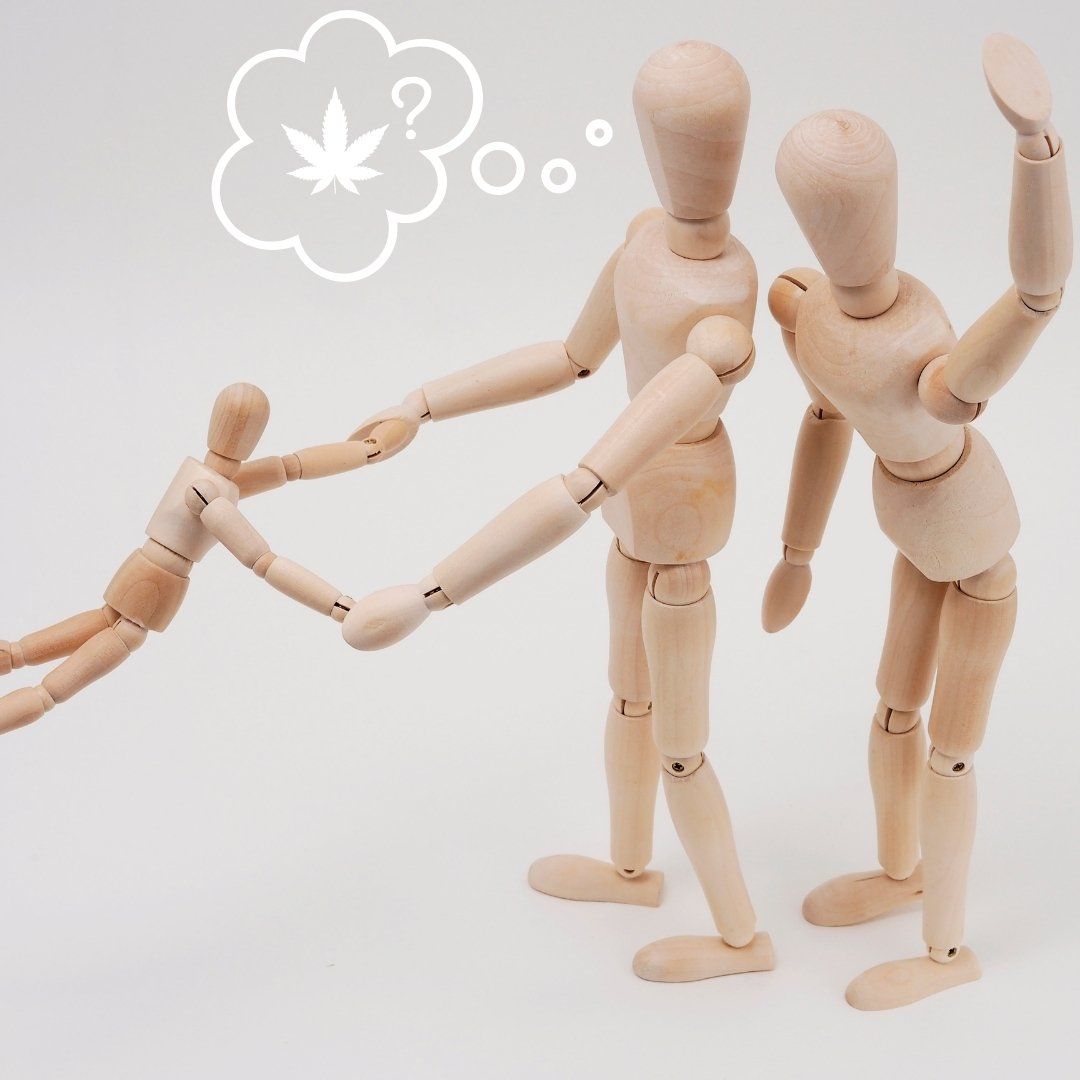
By Nakiesha Jordan
•
February 28, 2021
Cannabis may help improve various aspects of your life however even today cannabis users can face stigmas, especially when it comes to parenting. Too often the myth of the lazy cannabis user is utilized to judge and stereotype and can be hurtful to those it is targeted at. Today we will analyze this myth and ways that cannabis using parents can combat it! The myth of the lazy stoner came about shortly after the 1937 Marijuana Tax Act which criminalized all but industrial use of cannabis. Racism and prejudice created an association between immigrants and cannabis use creating negative stereotypes. These stereotypes were furthered by the War on Drugs in the 1970’s which repealed the Marijuana Tax Act claiming that cannabis held no medicinal value. Cannabis has a long history of being used for therapeutic and recreational purposes dating as far back as 500 BCE in places such as China and Siberia. In the United States during the 1800’s various different cannabis extracts were commonly sold in pharmacies and prescribed to those looking for symptom relief by doctors. Today parents struggling with chronic illnesses often turn to cannabis use to help improve their quality of life. Due to being able to find symptom relief, parents who use cannabis are able to better enjoy their time with their children and can be more attentive to them. Cannabis may be able to help parents be able to engage in more activities and keep up with the physical demands of parenting, proving the lazy stoner stereotype is just a myth! Knowing why the stereotypes exist is one thing but figuring out how to handle explaining to other people or even your children can be a difficult situation. Using cannabis is a private matter, so you should not feel pushed to have to divulge this information. Talking to your children about cannabis can help prepare them for comments or misinformation that they may encounter in the outside world. Explaining to them about cannabis safety such as not touching your cannabis products may help avoid unwanted situations. Explain to your children that cannabis use is for adults 21 years or older and that for young children with developing brains it is not a safe product for them to consume. As an adult you should always keep your cannabis stored properly and locked up out of reach! Avoid smoking in your home as cannabis smoke can be harmful for children. Make sure there is someone to care for your children for you while you are consuming cannabis and do not use cannabis products when you are planning to drive. Marijuana products can be mistake for food or candy by children, so make sure to store them out of sight. If a child consumes cannabis products call the poison control hotline or bring them to the emergency room. Communicating with your loved ones about cannabis can help bring the family together and develop stronger bonds through honesty and openness. A recent study shows that 1 in 8 people in the United States use cannabis, so maybe more adults than you know consume cannabis! If cannabis helps you be a better parent to your children, then ignore the stigma and just enjoy life’s precious memories!
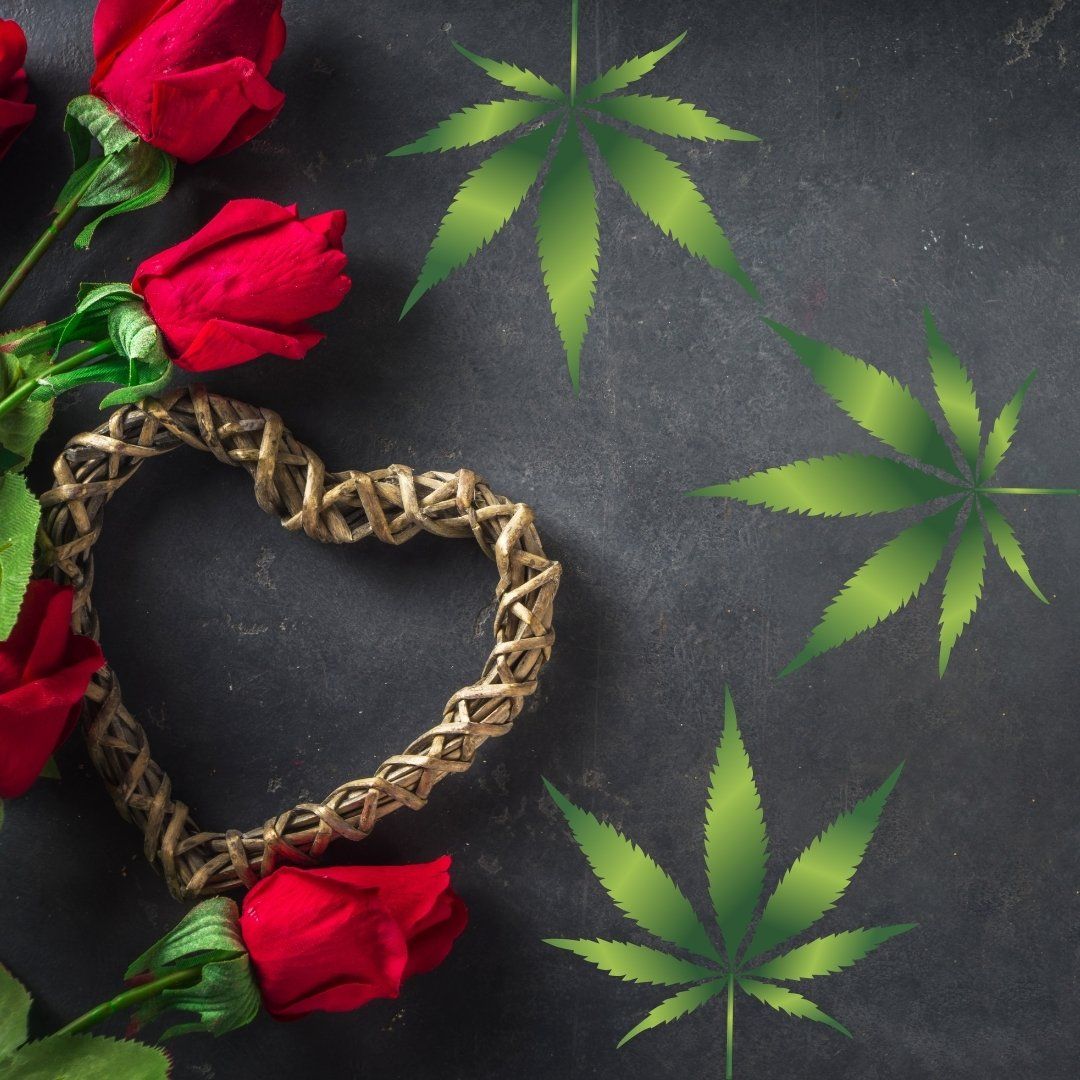
By Nakiesha Jordan
•
February 10, 2021
Valentine’s day is quickly approaching and you’re unsure of what to buy for the cannabis lover that you love? No worries, we got you covered! Here are some Valentine’s Day gift ideas just for you. Edibles are an excellent option for gift giving as they don’t require any accessories to consume! From chocolates to gummies, oil applicators, tinctures, capsules, and hard candies, the options are endless as to what you can choose. With so many options, where do you begin? Start by thinking about the lifestyle of the person you are purchasing for. Do they have dietary restrictions? Are they new to using edibles? If your cannabis lover is new to edibles it is always best to buy an edible with a lower potency per piece. Remember the advice of start low and go slow as this will help prevent the over consumption of THC edibles. Edibles will take around 2 hours to digest and may last 4-12 hours. Most edibles will have an easy to distinguish 1-5mg serving size. This may be a great starting dose for a beginner. You may want to avoid making your own edibles for you or your lover’s first edible experience, but if you do cook with cannabis oil make sure to know how much THC will be in each serving so that you can inform your loved one. Ask your budtender for recommendations and educational handouts on edibles that you can include alongside your gift! If you are in the romantic mood you can gift a topical to your lover. Massage oils, salves, lotions, patches, and intimate lubricants are all great for getting closer with your partner. The effects of the topical may provide localized relief within moments and may last for 4-12 hours depending on the type of topical used. Most topicals will not produce a psychoactive high but make sure to ask your budtender if the one you are purchasing may produce the effects you are looking for. Topicals may help ease sore muscles and may provide body relaxation so you can recover from your passionate night! Another great option would be pre-rolls! Pre-rolls are a convenient way to get high and are small enough to fit in almost any gift bag! Want something new to add with your gift? Try a chillum! The chillums we currently sell are reusable glass pipe pieces that come pre-packed with a small amount of flower. It’s a great way to try a new strain or for a quick smoke session before your Valentine’s Day dinner date. Smoking brings feelings of nostalgia but what if you want to gift a more discreet option? If this is the case then vape cartridges may be what you’re looking for! Vapes offer a portable and smell less option for a date that is on the go. Like almost any smoking consumption method the effects are nearly immediate and may last for a few hours. Due to the higher potency of vape cartridges euphoria and bliss may be inevitable and some strains may act as an aphrodisiac. Need something stronger? Ask your budtender for recommendations on concentrates! If you are still unsure of what would be a perfect gift for your loved one or for yourself please reach out to us! We are here to answer your questions and help guide you towards the best cannabis experience possible. If you are interested we currently have a Valentine's Day Bundle that is available for a limited amount of time! You can find it on our online menu through the link below!
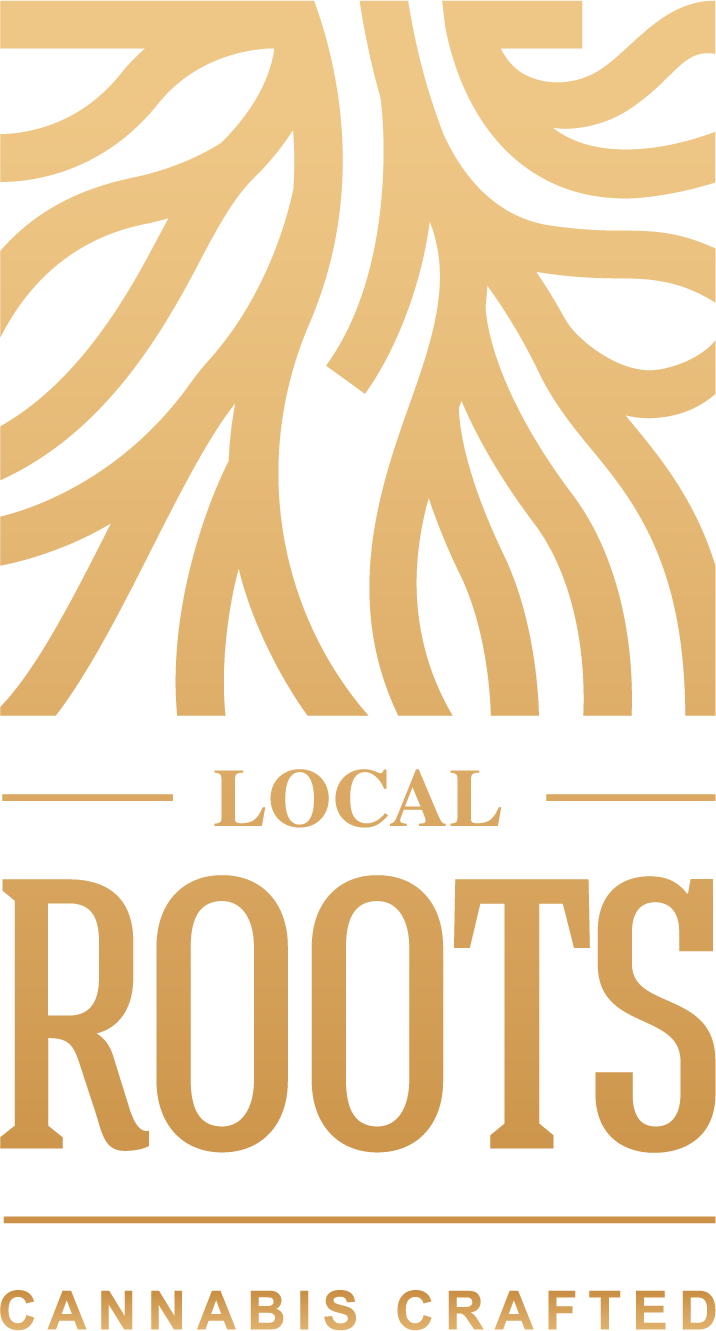
Please Consume Responsibly
For use only by adults 21 years of age or older. Keep out of reach of children. Marijuana should not be used by women who are pregnant or breastfeeding.
LocalRoots.cc
© 2025
© 2025
All Rights Reserved | LocalRoots.cc


